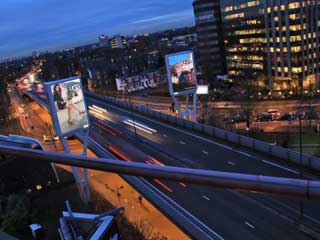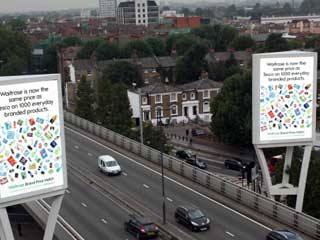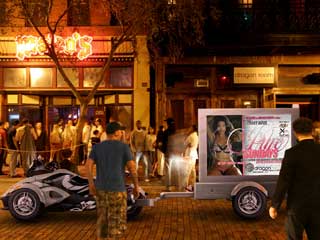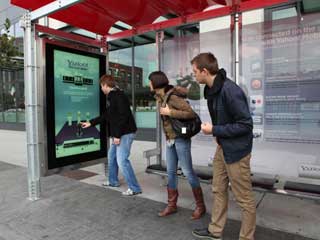Summing up: Some results of DOOH in 2010 and predictions for 2011
We are used to paying attention only to record-breaking events: the largest screen, the most expensive, the best of the best… It’s time to break up with tradition and write about future. After all, the 2010 is over and some results are becoming visible.
Well, 2009-2010 were the years of the economic depression. Thus, the results: small manufacturers of LED screens have all but disappeared from Europe. Larger European and American companies dominate the market but the number of successfully completed projects has shrunk drastically. LED screens are currently mass-produced in Korea, Taiwan and primarily China. While oil prices are skyrocketing, the prices on LEDs fall down the roof. Thus, the situation is favorable for expansion and growth of new digital advertising networks. This tendency is strongly supported by the growing advertising budgets for digital advertising media.
An impressively large US digital outdoor company Adcentricity that operates using it’s own software network platform ADVenue stated that OOH advertising spending nearly doubled in the period of 2009-2010 and the tendency is expected to persist. We should keep in mind that modern DOOH networks are no longer several modest locally linked screens but enormous companies with national ambitions. For example, Adcentricity boasts US-based 204 thousand digital screens, and a Chinese company Vision China claims to have reached 150 thousand. Such explosive growth means that companies tend to enlarge through mergers and acquisitions.
 |
 |
| Gateway to London: Two outdoor digital screens by Ocean Outdoor Photo credit: Ocean Outdoor |
|
Although utilization of the existing digital networks is quite high, the advertisers continue to pressure network operators and demand well-proven data on ROI and efficiency of contacts. On the other hand, the technology develops at high pace and many functions that were considered unrealistic are becoming almost commonplace: geographically linked commercials on transport, audience segmentation in age and sex groups, utilization of image-recognition systems for targeting advertising, narrowly specialized networks such as DOOH for dental clinics and even such futuristic projects as “Pay-per-Look” when advertiser is charged only for the exact number of eye-contacts with the screen, etc.
In Russia, the advertising market seriously deteriorated during the crisis but is on the rise again. The well-known marketing agency “ESPAR-Analytic” reported that the outdoor advertising grew 18% in 2010 but the advertising prices remain seriously below the pre-crisis level. The losses of advertising surfaces in 2009 are being gradually recovered, primarily through adding new high-end technological digital carriers. The commercial utilization of screens in Russia has reached an impressive level of 80%.
In general, experts from TNS Media Intelligence optimistically report the upward trend across the whole advertising market. The advertising budgets for all major brands reached the pre-crisis level in all media categories. A positive trend was reported: in 2010 new brands started to appear and this will favorably affect grown of different media segments in 2011.
Naturally, the Russian market is tiny compared to other developed countries, but the tendencies in Russia are the same. Particularly, young workforce is more loyal to digital media and screen perception of information. And this fully justifies the replacement of standard static advertising with digital OOH networks which are more attractive, proactive and flexible in selling brands. However, as the number of digital screens continues to grow, the competition will get fierce and prices per contact will continue to drop.
 |
 |
| Ultra bright 65” LCD LED HD display on mobile trailer Photo credit: colorledsigns.com |
72” LCD touch-screen at bus stop in San Francisco Photo credit: obscuradigital.com |
To win in this race one has to have advantages. Possibly, digital networks will develop by adding new functions, integration of new platforms, image recognition systems, integration with SMS-services and target-specific advertising through digital OOH screens and smart-phones, zoning of screen surfaces between adverting and informational content, utilization of touch-pad technology, incorporation of GPS technology into digital advertising screen networks, etc.
In the area of outdoor LED screens some changes are inevitable. The outdoor SMD LEDs are still fairly unusual but will soon get into the mainstream of production technology and replace traditional DIP LEDs. New LEDs with black-base will help to improve contrast and image quality. Positioning of LEDs with tight pitch will additionally improve the image but will seriously challenge control systems of LED screens. Price wars between various manufacturers of control systems will be a fun to watch.
Whatever the case, 2011 in the area of digital advertising promises to be interesting and saturated with events and new topics.





